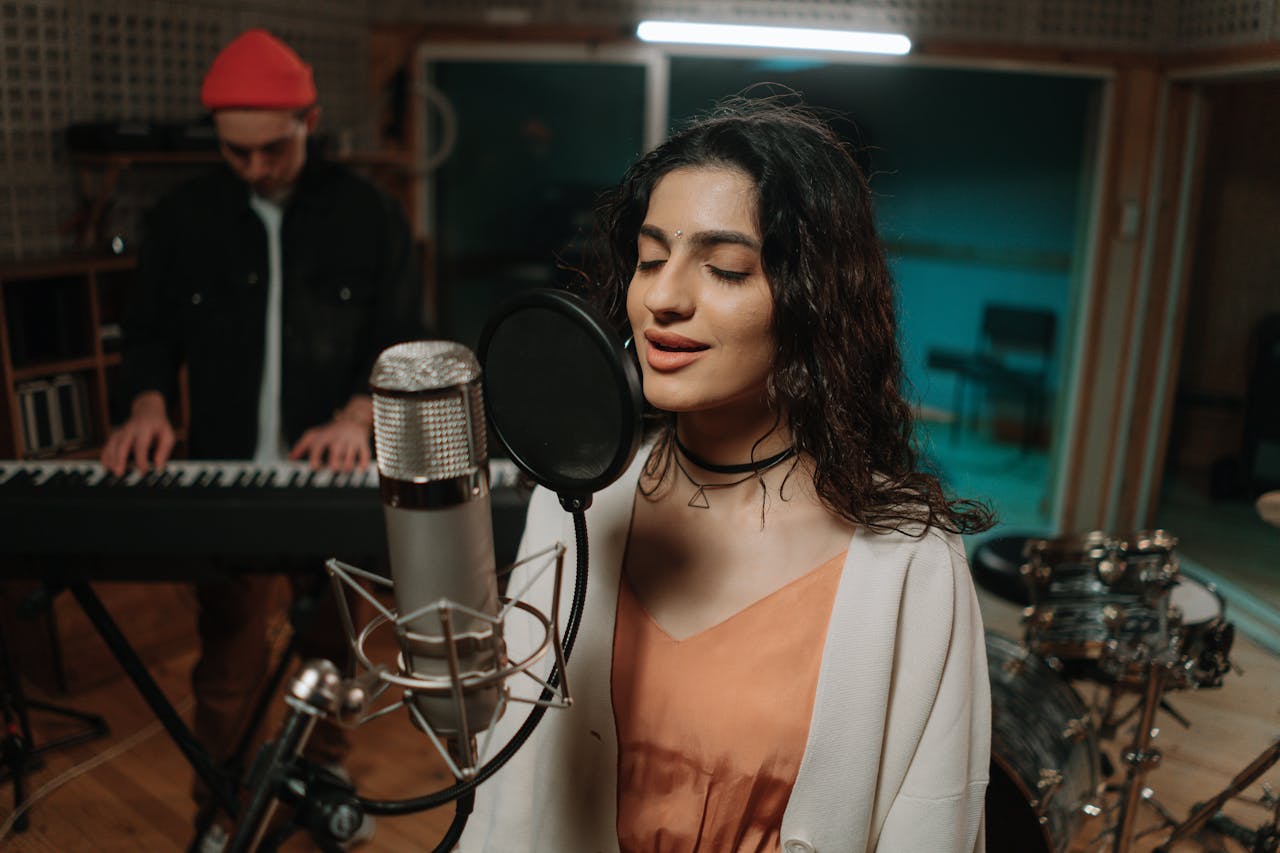Live Recording Tips: Capturing the Energy and Authenticity of Live Performances
Capturing the magic of a live performance through recording can be both exhilarating and challenging. The goal is to convey the energy, emotion, and authenticity of the live experience while maintaining high audio and video quality. Whether you’re recording a concert, theater performance, or a live event, here are some essential tips to help you achieve a professional and engaging result.


Preparation is Key
Scout the Venue
- Visit Ahead of Time: If possible, visit the venue before the event to assess the acoustics, lighting, and layout. This will help you plan your setup and anticipate any challenges.
- Check Equipment Access: Confirm where you’ll be allowed to place your recording equipment. Make sure you have the necessary permissions and understand any restrictions.
Plan Your Equipment
- Microphones: Use high-quality microphones suitable for capturing live sound. Condenser mics are great for studio environments, but dynamic mics often perform better in live settings due to their durability and ability to handle high sound pressure levels.
- Cameras: Choose cameras that offer good low-light performance and can handle varying lighting conditions. Consider using multiple cameras to capture different angles and perspectives.
- Recording Gear: Ensure your recording gear, including mixers, interfaces, and audio recorders, is in good working condition. Test everything beforehand to avoid last-minute issues.
Setting Up Your Gear
Audio Setup
- Mic Placement: Position microphones strategically to capture both the performance and the audience. For music performances, place overhead mics for ambient sound and close mics for individual instruments. For vocal performances, use a combination of handheld and ambient mics.
- Monitor Levels: Adjust microphone levels to prevent distortion and ensure a clear recording. Use headphones to monitor live audio and make real-time adjustments as needed.
Video Setup
- Camera Angles: Set up cameras to cover different angles, such as a wide shot of the stage and close-ups of performers. Use a tripod for stable shots and consider using a gimbal for dynamic camera movements.
- Lighting: Make sure your cameras are not affected by harsh stage lights. If necessary, use additional lighting equipment to ensure a well-lit recording without creating unwanted shadows or glare.
Capturing the Performance
Record the Soundboard Output
- Direct Connection: Connect your recording equipment directly to the soundboard to capture a clean mix of the performance. This ensures you get the best possible audio quality and reduces the risk of interference from ambient noise.
- Monitor the Mix: Pay attention to the live mix during the performance. If you have access to the sound engineer, collaborate with them to ensure the mix is balanced and suits the recording needs.
Balance Audience and Performance
- Audience Atmosphere: Incorporate audience reactions into your recording to capture the full experience. Use ambient microphones to pick up crowd noise without overpowering the performance.
- Avoid Overloading: Be mindful of the levels to avoid distortion. Ensure that the audience noise complements rather than detracts from the performance.
Post-Production Process
Audio Editing
- Clean Up the Tracks: Use audio editing software to clean up any unwanted noise or interference. Apply equalization and compression to balance the sound and enhance clarity.
- Sync Audio and Video: Align the audio and video tracks accurately to ensure that they match perfectly. This is crucial for maintaining the authenticity of the live performance.
Video Editing
- Select the Best Shots: Review your footage and select the best shots that capture the energy and key moments of the performance. Use transitions and effects sparingly to enhance the viewing experience without distracting from the performance.
- Color Correction: Adjust color balance and exposure to ensure consistent video quality across different camera angles. This helps create a cohesive look for the final edit.
Ensuring Quality Control
Review the Final Edit
- Check for Errors: Watch and listen to the final edit thoroughly to catch any errors or inconsistencies. Pay attention to audio synchronization, video transitions, and overall flow.
- Seek Feedback: If possible, get feedback from others, such as the performers or a trusted colleague, to ensure the recording accurately represents the live performance.
Prepare for Distribution
- Format and Compression: Export your recording in a high-quality format suitable for your intended distribution platform. Compress files if necessary to balance quality and file size.
- Metadata and Tags: Add relevant metadata and tags to make your recording easily searchable and accessible. Include information about the performance, performers, and any other pertinent details.
Tips for Enhancing the Live Recording Experience
Communicate with Performers
- Pre-Performance Briefing: Discuss your recording plans with the performers beforehand to ensure they understand the setup and are comfortable with the equipment.
- Capture Special Moments: Highlight key moments, such as solos or audience interactions, to create a more engaging recording that reflects the performance’s unique qualities.
Invest in Quality Gear
- Professional Equipment: Investing in high-quality recording equipment pays off in the final product. Ensure that your gear is up to industry standards to capture the best possible audio and video.
Stay Flexible
- Adapt to Changes: Be prepared to adapt to unexpected changes or challenges during the performance. Flexibility and quick thinking are crucial for capturing the essence of a live event.


Recording a live performance involves careful planning, precise execution, and detailed post-production work. By preparing thoroughly, setting up your equipment correctly, and paying attention to the nuances of the performance, you can capture the energy and authenticity of live events. Whether for archival purposes, promotional content, or personal enjoyment, these tips will help you create a recording that truly represents the vibrancy of the live experience.












